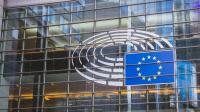The commission's "back-door" expansion of the merger control rules
Undertakings must be ready to adjust to more transactions being subject to merger control in the future – even where the national thresholds have not been exceeded. This is a consequence of the Commission's new guidance on case referrals under the so-called "Dutch clause" in Article 22 of the Merger Control Regulation. The amendment is expected to particularly affect transactions involving undertakings in the digital and pharmaceutical sectors.

The new guidance is the Commission's follow-up on the speech delivered by Margrethe Vestager at last year's competition conference of the International Bar Association (IBA). You can read about that here:
Vestager: New policy for referrals from national competition authorities
Article 22 of the Merger Control Regulation, and the Commission's referral practice hitherto
According to Article 22 of the Merger Control Regulation, EU member states may request the European Commission to examine a transaction for potential competition concerns. This possibility has always been regarded as an exemption, and the use thereof has been quite limited. In Denmark, the provision was used for the first and only time in 2020 in Mastercard/Nets where the merger had already been notified to the Danish Competition and Consumer Authority. It is basically a condition for such referral:
- that the merger affects trade between the member states;
- that the merger threatens to significantly affect competition within the member states making the referral.
The referral mechanism (also known as "the Dutch clause") was originally introduced at the request of the Netherlands, because they and various other member states did not at the time have their own national merger control rules. In member states having national merger control regimes, the mechanism has in practice primarily been used in cases where the national authorities had the powers but found that the transaction should rather be examined by the Commission.
It has for many years been the Commission's opinion that it should not be possible to use the clause in cases below the national thresholds, which has also limited the use of the clause.
The new Commission Guidance
On 26 March 2021, the Commission published its new communication on application of the referral mechanism set out in Article 22. The communication involves a significant change in the current practice as the Commission now suggests a more proactive approach to the use of Article 22 in order to catch cases which, even if they fall below national threshold, may still be cases that the competition authorities consider relevant to examine. Hence, the communication provides guidance on the categories of cases that the Commission in the future will actively encourage member states to refer, even if the transaction is not notifiable under national law. The cases in question consist of transactions where the turnover of at least one of the merging parties does not reflect the actual or future competitive potential of the undertaking and therefore not the real market power of the undertaking. This could include, for example, mergers where one of the merging undertakings:
- is a start-up or recent entrant with significant competitive potential that has yet to develop or implement a business model generating significant revenues;
- is an important innovator or is conducting potentially important research and development;
- is an actual or potential competitor;
- has access to competitively significant assets such as for instance raw materials, infrastructure or intellectual property rights);
- provides services that are key components for other industries.
In addition, the Commission will generally consider whether the value of a transaction is particularly high compared to the current turnover of the undertaking.
The Commission has especially directed its focus on digital markets and the pharmaceutical sector in which undertakings, according to the Commission, may play a significant role on the relevant markets despite generating little turnover. The reason could be, for instance, that the undertaking has not yet exploited its market position commercially.
On the digital markets, the reason is that undertakings often build up a large user base and commercially valuable data inventories before seeking to monetise their competitive position.
In the pharmaceutical sector, the reason is that innovation is an important parameter of competition. Undertakings that in the long term may become important players on the market are sometimes sold before the results of their research and development activities have been exploited commercially.
However, the new approach is not limited to those two sectors but is generally directed towards mergers with the aforesaid characteristics. Therefore, the change communicated by the Commission creates uncertainty for the transaction parties: in future, it will not be sufficient to consider whether the national thresholds have been exceeded in order for the transaction parties to conclude that they do not need merger clearance. In future, they will also have to assess the risk of referral under Article 22 associated with the Commission's new guidelines.
Referral procedure
It is still the member states that have the opportunity to refer cases under Article 22. Based on the new guidance, however, the Commission will take a much more active role in the future. This may imply, for instance, that the Commission in certain cases may invite the national authorities – which are bound by a duty of loyalty to the Commission – to request a referral even if the national thresholds have not been exceeded.
A referral request must be made at most within 15 working days of the date on which the not-notifiable transaction is made known to the relevant member state. Other member states may join the request within an additional period of 15 working days, after which the Commission within an additional 10-day period will decide whether to examine the merger. In practice, therefore, undertakings may have to wait a long time to find out whether the transaction can be completed as planned or whether they have to await the Commission's clearance.
The new guidance suggests that merging parties may voluntarily come forward with information about their intended transaction in order to get an early indication from the Commission as to whether the merger would be a candidate for referral. It is a condition, however, that the Commission has access to all the required information about the merger. And even in that case, it is not currently possible to obtain from the Commission a formal and binding guarantee that no further examination will be initiated. In practice, therefore, merging parties need to consider whether this opportunity may constitute a risk in the relevant case.
How to address the Commission's new practice?
Undertakings have actually always had to address Article 22 in connection with transactions. However, in view of the Commission's change of policy, this is now even more relevant, although the procedural changes resulting from the new approach are still uncertain. They will depend highly on the relevant referral criteria determined by the Commission – and, not least, by the national authorities. It is obvious, however, that there will be an increased risk that undertakings may in future have to notify mergers even if neither the national nor the EU thresholds have been exceeded.
Undertakings should therefore always perform a concrete assessment of the risk of a potential referral based on the new guidance and the Commission's and the national authorities' practice over the next years. The risk should be assessed early in the process and should be taken into consideration in the transaction documents in order that the undertakings do not risk implementing a merger until it is certain that no competition law issues will arise.
In practice, this may mean that the deadlines for a referral under Article 22 may be incorporated into the planning of the transaction. Undertakings should furthermore consider how to create sufficient publicity about transactions to ensure that the 15-day time-limit for referral by the relevant member states begins to run. If it is held that a transaction has not been "made known" to a member state, the case can in principle be subject to referral long after closing. By way of example, in the case Thrane & Thrane / Nera from 2007, the Commission accepted a referral approx. two months after the parties had completed the transaction. In addition to a high degree of uncertainty, it may cause extraordinary problems if the Commission decides to prohibit the merger or require commitments from the Parties to the transaction post-closing.
It should be considered on a case-by-case basis whether it would be relevant to contact the Commission or the national competition authorities to obtain informal directions about a possible referral risk.
Contact


